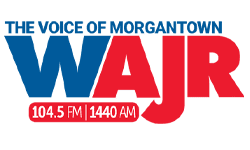FAIRMONT, W.Va. — The Fairmont State University Center for Aviation Excellence has plans to add three aircraft over the next 18 months that will give them the capacity to expand the program.
On WAJR’s “Talk of the Town,” Director and Chief Pilot Joel Kirk said Fairmont State University offers degrees in Professional Flight and Aviation Management. All students get the aircraft business portion of the training, and those who aspire to be pilots take on those additional training responsibilities.
“It’s basically a business degree that’s oriented toward airport operations, airport management, and aircraft company management,” Kirk said. “So, everybody gets that degree, and then the people that want to be pilots get the professional pilot concentration and the flight certifications on top of that.”
The type of Cessna the school is taking delivery of is known as a popular aircraft for pilot training. The aircraft has advanced flight instrumentation, navigation, and communication capabilities, providing important fundamental training.
“It’s the Cessna 172 G-1000’s airplanes that are being delivered—we have one, and we’re expecting another one in August,” Kirk said. “We also have one on order, but they are so far backordered it could be up to a year and a half before we see that one, so we actually have three inbound.”
The addition of the aircraft will allow Kirk to nearly double class sizes, but space at the Fairmont State Aviation Hangar at the North Central West Virginia Airport in Bridgeport is the limiting factor. Kirk said they are looking at some temporary hangar options in the future, but that timetable is unclear.
“About 60 students that we keep on deck here are flying at any time, Kirk said. “With the addition of the aircraft and the accompanying staff we would need, our biggest issue right now is space. We hope to go to 80 to 100, so almost double the size we are now.”
Graduates from the professional pilot program have many opportunities in the aircraft industry. Once certified, getting additional hours and certifications is the key to moving to larger or more complex aircraft and a larger salary.
“Either become a flight instructor here, or some of them take outfitter jobs in Alaska as a time-building session over the next couple of years before they go to a regional airline or the military,” Kirk said. “A lot of our kids go to the military as well.”
Kirk said Fairmont State University is the first in the state to offer rotary-winged training. The school now has a Schweizer S300, originally designed for the U.S. Army by Hughes Helicopters, and it has been in use for more than 50 years. The aircraft is known to be very reliable and has the best safety record of any piston-powered helicopter, according to the FAA.
“We are the first in the state to start a university rotary wing training program,” Kirk said. “That’s very exciting because we have a lot of students looking to learn how to fly helicopters as well.”



